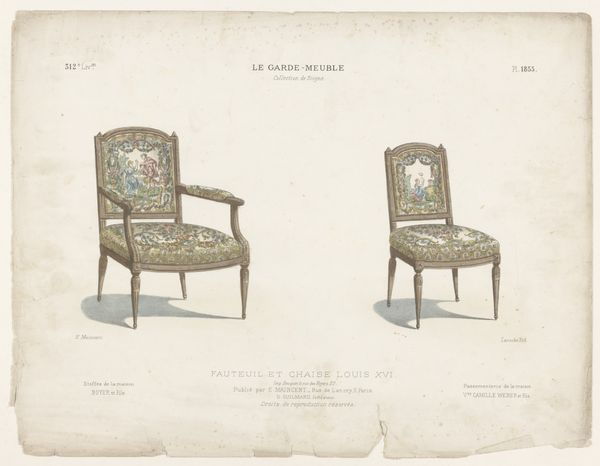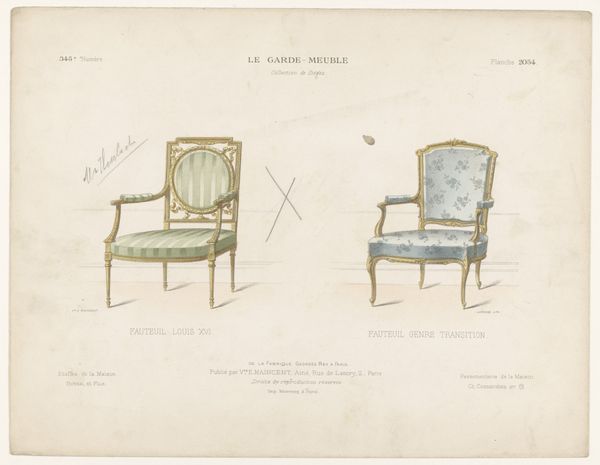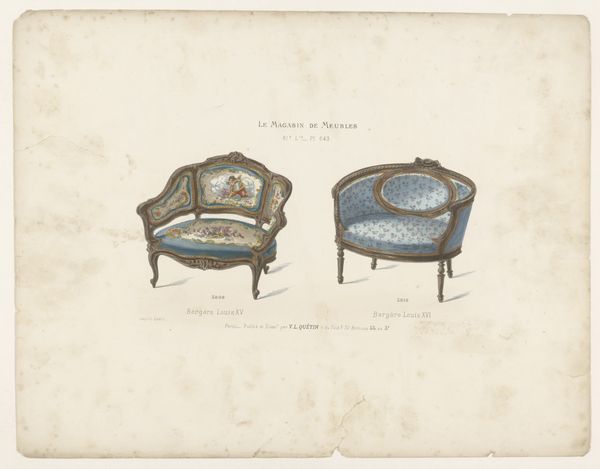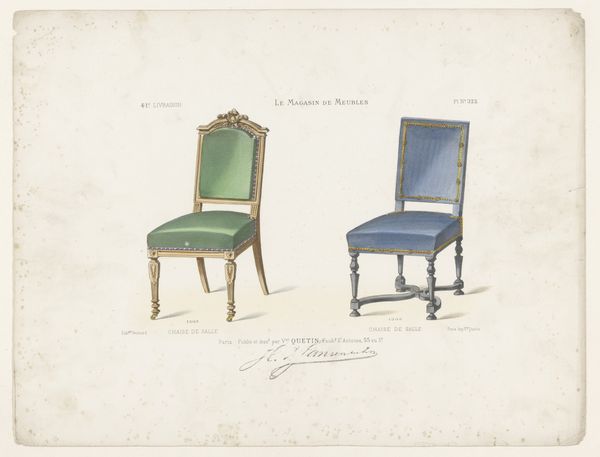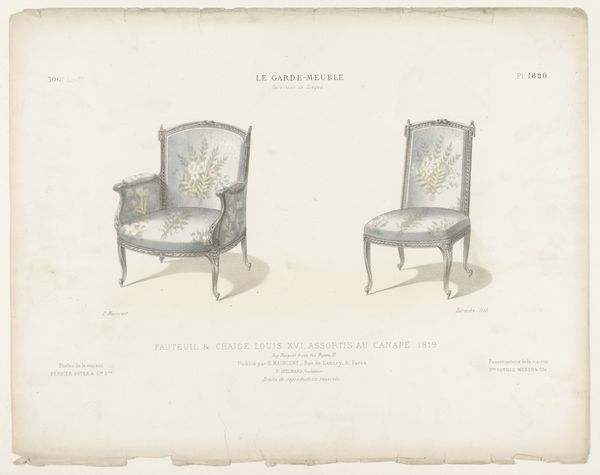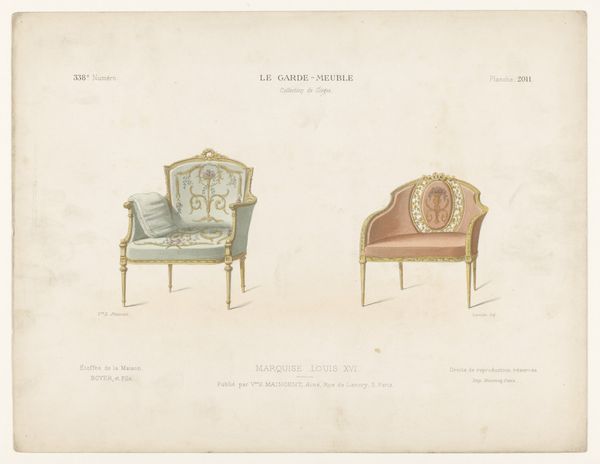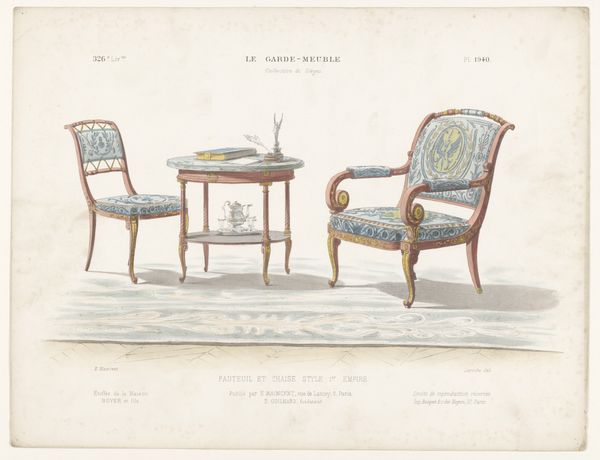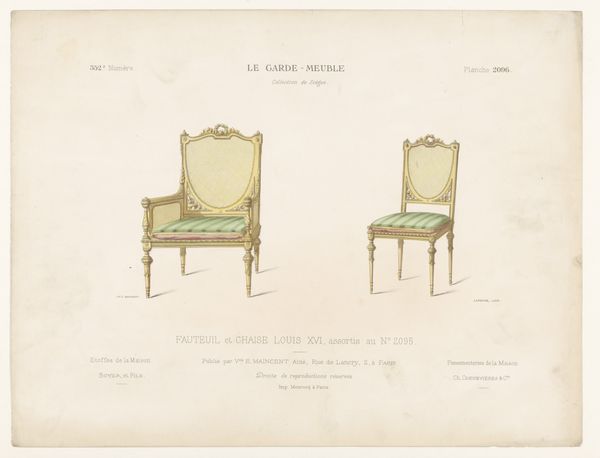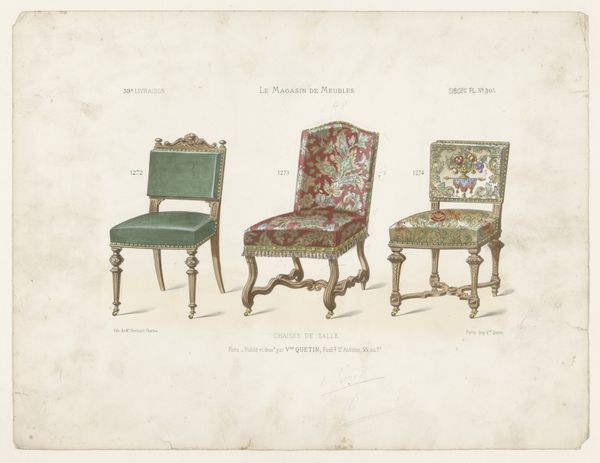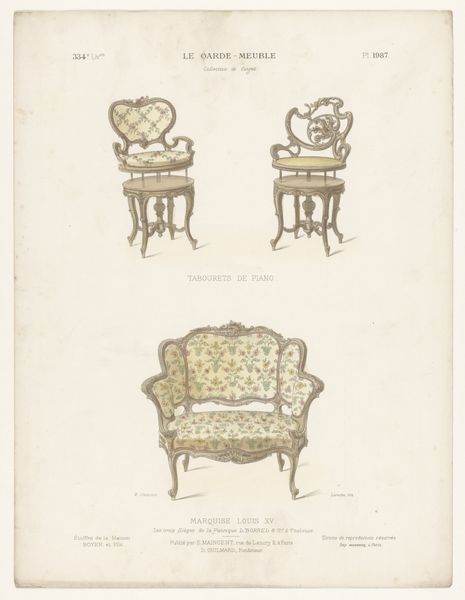
drawing, paper, watercolor
drawing
paper
watercolor
watercolour illustration
Dimensions: height 274 mm, width 358 mm
Copyright: Rijks Museum: Open Domain
Curator: Looking at this watercolor and drawing on paper, entitled “Canapé en stoel,” which translates to “Couch and chair," dating from after 1878 by an anonymous creator, I am struck by how delicately rendered these furnishings are. What’s your immediate impression? Editor: It evokes a feeling of restrained elegance; the muted tones and the precise lines lend it a somewhat formal, almost staged, quality. I find it aesthetically pleasing, even though the drawing feels quite contained. Curator: These drawings offer more than just visual pleasure; they open a window onto late 19th-century consumer culture, class structures, and the social performances of the bourgeoisie. The floral upholstery and ornate framework represent an idealized domesticity. How does it strike you formally? Editor: I’m drawn to the subtle tonal variations and how light catches the gilded edges of the frames. The composition directs the eye across the subtle gradients and textures of the fabric, giving an almost tactile sense of plushness. Semiotically, each line contributes to the overarching symbol of refined taste. Curator: Precisely. These chairs also become potent symbols of power relations within the domestic space. Consider, who gets to occupy such a carefully designed object? And what socio-economic narratives are interwoven with domestic display? I can't help thinking about gender dynamics and class aspirations here. Editor: Certainly, and from a structuralist perspective, the careful mirroring and near-symmetry suggests an inherent desire for order. Note the parallel depiction of both chair designs and prices! Yet the slight irregularities soften this symmetry, hinting perhaps at individuality within prescribed forms. Curator: These "irregularities" could reflect shifts in interior design standards of that period, which catered increasingly to bourgeois individual tastes rather than rigid aristocratic norms. We can even see subtle tensions here – the intersection of standardized production with aspirations for uniqueness. Editor: So, the artwork succeeds in speaking of both control and nascent rebellion— encoded via lines, tone, texture! The piece gives a complex look into an era and aesthetic through pure form. Curator: Exactly! Considering the artwork this way can encourage audiences to reflect critically on decorative designs and domestic spaces within their socio-political world. Editor: Indeed, seeing past immediate formal appearance exposes a silent cultural record to those with curious eyes.
Comments
No comments
Be the first to comment and join the conversation on the ultimate creative platform.
